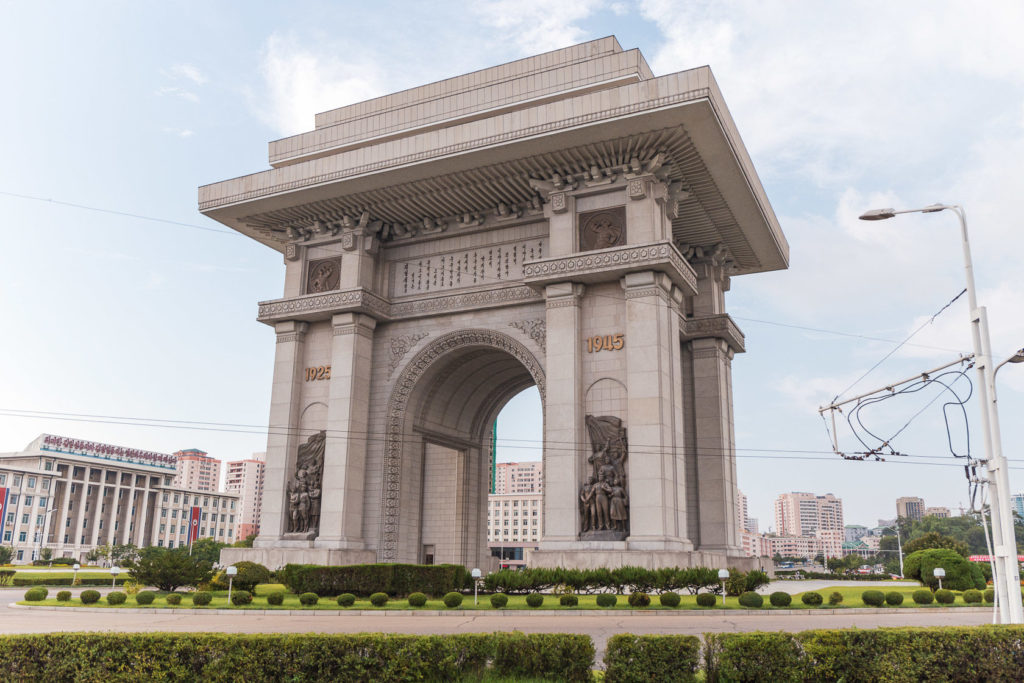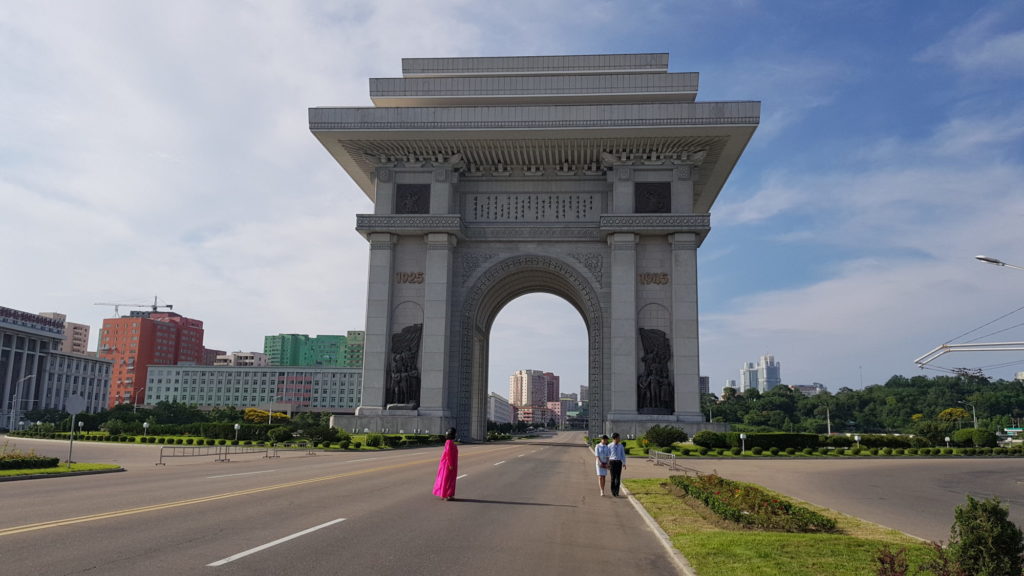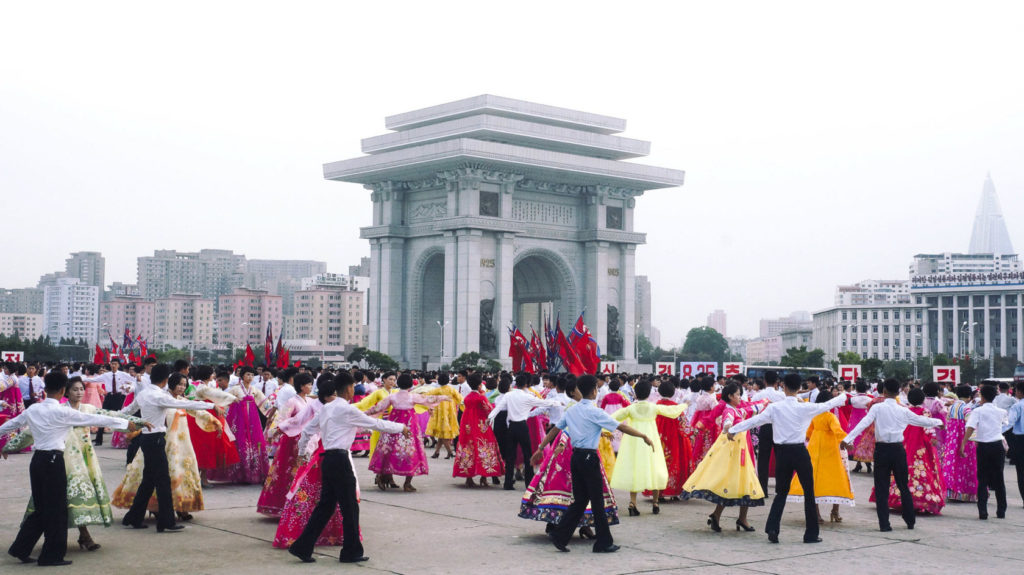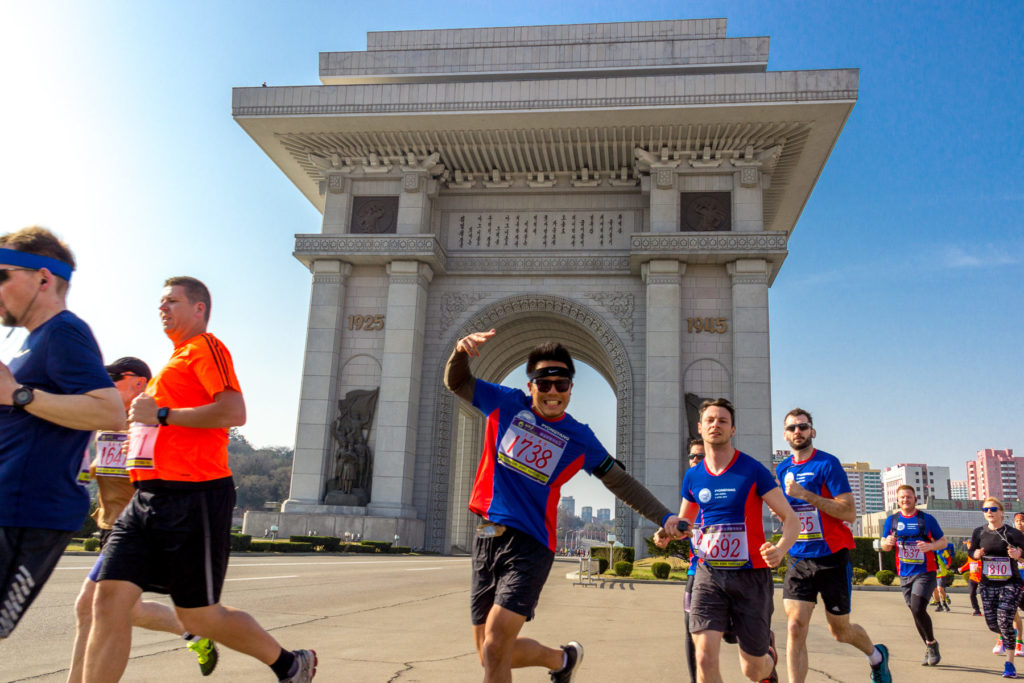Overview

The Arch of Triumph is a 60-meter granite triumphal archway erected at the foot of Moran Hill in Pyongyang. The monument was unveiled on April 14, 1982 to mark President Kim Il Sung’s 70th birthday, the day after. The Arch of Triumph was built to commemorate Kim Il Sung’s victorious return to Korea after national liberation from Japanese occupation in 1945.
Design

The Arch of Triumph was designed by the Paektusan Institute of Architecture and produced by the Merited Sculpture Production Company of the Mansudae Art Studio in Pyongyang. The monument is made of 10,500 blocks of white granite making up four stories standing at 60 metres tall and 52.5m wide, making it 10m taller and 7.5m wider than the Arc De Triomphe in Paris. The gateway of the arch is 27m high and 18.6m wide, and small vehicles are able to pass through the arch, with all traffic permitted around it.
Symbolism
As with all North Korean monuments, the Arch of Triumph is rich in symbolism. Kim Il Sung’s efforts in leading a guerilla army to liberate Korea from Japanese colonial rule are the cornerstone to his legacy and admiration from the people in North Korea. Without the liberation of Korea, the Democratic People’s Republic of Korea (North Korea) would not exist. The Arch of Triumph was built to highlight and hand down this achievement to the generations.
The dates ‘1925’ and ‘1945’ prominently displayed on the arch legs symbolise the year Kim Il Sung left his home in Mangyongdae at the age of 13 with the vision of this national liberation, and the year he returned triumphantly to Korea after the Japanese were defeated.

The location of the Arch of Triumph was chosen as it’s where Kim Il Sung gave his victory speech to a mass rally after returning to Pyongyang on October 14, 1945. This is commemorated by a colourful mural nearby the arch named ‘Cheers of the Nation’, along with a plaque recounting the speech.
The intricate bronze sculptures on the Arch of Triumph depict cheering soldiers of the Korean People’s Revolutionary Army (of which Kim Il Sung led) and of civilian Koreans in admiration at the time this historical speech was made.
Engraved on the face of the arch are the words to the revolutionary ‘Song of General Kim Il Sung’, and a carving of Mt. Paektu, esteemed as the ‘sacred mountain of the revolution’ as a result of Kim Il Sung’s anti-Japanese activities in the region.
The gateway of the arch is framed by 70 azaleas, signifying the 70th birthday of President Kim Il Sung, and the flowers themselves are regarded as a symbol of the ‘anti-Japanese struggle’ in North Korea.
Fun fact: North Korea’s Juche Tower was also unveiled for Kim Il Sung’s 70th birthday, a day after the Arch of Triumph on April 15th itself.
Visiting on Our Tours
The Arch of Triumph is open every day and is often our first stop in Pyongyang as it’s en route from the airport. We’ll take photos of the exterior before heading up to the observation deck for our first panoramic view of North Korea’s capital, include the famed Ryugyong Hotel and Kim Il Sung Stadium.

The Pyongyang Metro station ‘Kaeson’ (Triumph) is right beside the Arch of Triumph, and we like to alternatively join the locals for a metro ride, alighting here to see the arch. The Kaeson Youth Amusement Park is a stones throw from the arch which makes for an exhilarating detour afterward.
For those visiting on our Pyongyang Marathon tours, this event begins from Kim Il Sung Stadium, and the Arch of Triumph will form the backdrop right outside the stadium.
The lift inside the Arch of Triumph costs 5 EUR per person at a booth inside. There is, however, a final set of stairs before you reach the deck. The ceiling is low here and many steps are uneven, so mind yourself!
There’s a small gift shop on the upper level, and a projector room with comfy armchairs to enjoy a video of Arch of Triumph history.
